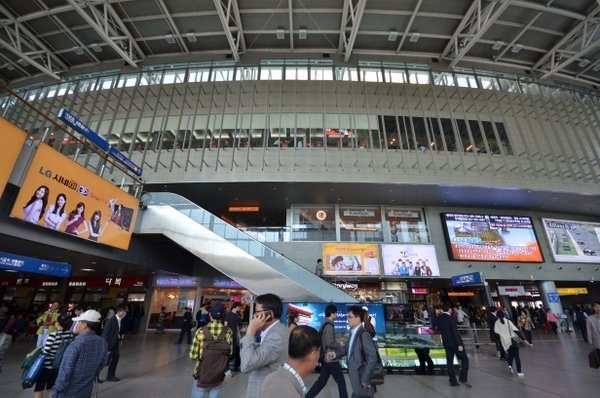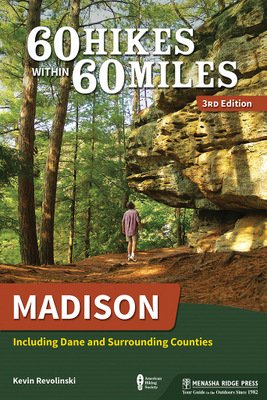Bangkok Floods: Do I Still Go To Thailand?
The other day I walked into a camera store in Madison and asked to try a Nikon D7000. “Sorry we sold the last one.” I replied, “When are you getting more?” The clerk shook her head and smiled like I was asking her for tomorrow’s lottery numbers. “Who can say? Not for a very long time we think. Last we saw, the waters were up to the roof of the factory in Thailand.” Yikes.
I am, of course, well aware that the flooding has been bad since the summer. At the moment my in-laws in Bangkok have prepared the sandbags, but remain inside the dry zone. My good friend Bee hasn’t been so lucky. Her pet store lies outside the city where the battle to hold back water is totally lost in many places. This is her shop:
This is an area outside Bangkok as viewed from a helicopter:

Despite the floods, I recently encouraged an old friend to not cancel her trip to Thailand, and off she went to Southeast Asia’s version of Waterworld, deciding to heed some of the wisdom of online information about what and where the risks are, while ignoring the sense of Apocalypse that sometimes comes out of any press coverage of disaster or tragedy. If things weren’t bad, the press wouldn’t be there at all, but as with everything in the media these days, if it’s not a circus show, no one’s buying. Journalists often want to create a story bigger and better, a photo more shocking, than the next guy down the line, and that can often lead to some seriously bad press ethics as you can read in this Christian Science Monitor story. Thailand needs the land to dry up, not tourism.

Photo by Pietro Motta
The floods started in the north when the rains came quite a bit harder this monsoon season. At that time, indeed, places such as Chiang Mai, the lovely foreigner-loved second city of Thailand, had overflowing river waters and other rural areas were hit very hard costing lives and livelihood for many. To date over 560 people have died. Waters are still receding in northern provinces, but residents there have begun the long painful work of recovering what they can and rebuilding. In Chiang Mai, much is back to normal and even the recent Yi Peng festival went on as usual.
But the flood moved south. To simplify: Thailand is a bit like a ramp from north to south. Much of the water drains to the Gulf of Thailand via three major rivers and all that flooding has rolled downhill to Bangkok, causing the worst flooding in decades. The Chao Phraya River itself, which twists right through the heart of the capital, drains 60,975 square miles of land. Bangkok sits on low, soggy land to begin with, and this is why kings of generations past built the canal system. It’s not called Venice of the East for nothing.
Photo by Nor Oh
The flood effects in Bangkok will continue perhaps another month or more – no one knows for sure or at what point the waters will stop advancing on the city center. At the moment, downtown is dry, but the flooded areas along rivers and canals have been expanding. The Thai are very resilient people and with some of the saddening images of loss, you are bound to see as many photos revealing the “mai pen rai” philosophy (a common Thai expression meaning “it’s alright, never mind”): improvised boats, children smiling and playing in flooded streets, families sitting on top of their dinner tables watching TV in a half-flooded room. This is not to downplay the loss, but rather reveal the character of Thai culture.
Should you cancel your trip to Thailand? I wouldn’t. The international airport (Suvarnabhumi, or more simply, BKK) continues to operate. The photos you may have seen of The Airport are of the old Don Muang airport. Shots of planes in need of hip waders have caused unnecessary panic among travelers. If Bangkok troubles you, connect through to one of the other domestic airports and destinations using some very reasonable budget airlines such as Air Asia, Nok Air and Orient Thai. (Be sure the airline you choose is operating from Suvarnabhumi! All airlines affected by the closure of Don Muang Airport are doing so at the moment, but that may change as the situation improves.)
So Where To Go If Not Bangkok?
Tourist magnets Phuket and Pattaya are still open for business. Chiang Mai is always a winner (here’s GotPassport‘s great list of things to do in Chiang Mai). Probably my favorite spot in Thailand is in the south in the Andaman Sea: Tarutao National Park and Koh Lipe, Koh Adang, followed closely by the province of Krabi. Islands such as Koh Samui, Koh Tao in the Gulf of Thailand are always popular, and Hua Hin, the gulfside resort city just 2.5 hours drive from Bangkok, is a nice non-flight alternative. That’s just scratching the surface.
And remember, at this stage, Bangkok may have had its troubles, but the hotels (even those along the Chao Phraya River, such as The Shangri-La) remain open and provide updates on their websites. The Skytrain and the subway are still running. Restaurants are open, and so are the significant tourist areas. So if you are still wondering if you should book flights to Bangkok, the answer is “Yes.”
Twitter users should follow #thaifloodeng for a good Thailand flood hashtag and here is my own Twitter list for Bangkok troubles.
To donate for Thai Flood Relief, consider the Thai Red Cross Society.
__________________________________________





 ORDER YOUR COPY TODAY!
ORDER YOUR COPY TODAY! ORDER YOUR COPY TODAY!
ORDER YOUR COPY TODAY!
I’m so glad you’ve written this! It’s bad enough that Thailand has to suffer through the floods but if tourists stop going to the country it’ll have an even bigger effect on the economy there!
Exactly. And with the past two years also seeing tourists detour around the place thanks to political rallies and airport closures, it just keeps going bad for Thailand. Thanks for commenting!
Any blog with “mai pen rai” in it is bound to be one of my favorites. I always try and learn the expression for “no big deal” whenever I visit a new country.
Great level headed post here on the facts about the Thai flooding. You are so right about the sensationalism sweeping the web although this type of reporting is nothing new, but it is more in our face now that we can click on this type of crap with a click of the mouse instead of having to go out and buy a newspaper.
I visited Thailand two weeks after a much more dangerous issue with water: the 2004 Asian tsunami. I did not even consider canceling my trip. I just went to other areas that had not been affected by the tragedy.
The tsunami was such a big disaster for Thailand (and others) and yet mostly isolated to a thin band of land along the sea. Incredible/shocking how much death and devastation could happen in a moment on a sunny day. I interviewed a Rotarian in Krabi who had helped during the aftermath and he showed me photos I’d prefer to forget. I also interviewed Marko Cunningham a teacher turned Bangkok ambulance driver who had helped collect the bodies. But abandoning plans to go to unaffected areas doesn’t help anyone.
Yes, come to Thailand now more than ever. I travel through BKK when going from my home in Chiang Mai to Cha-Am where I volunteered for the Wildlife Friends (WFFT) team caring for dogs rescued from the flood zone (http://nolakelsey.wordpress.com/the-v-traveler-blog-2/). The international airport and much of the city I saw from the ground was dry, in stark contrast to the 10+ minutes of flying over water with roofs peeking out I saw from the plane.
I think tourist should still come, with an eye on other areas if their plans on BKK are ‘awash’. Chiang Mai is perfection this time of year. The islands are always fantastic. Cha-Am (only 3 hours to the south of BKK) and the entire Petchaburi area great and have both beaches and National Parks. Basically, there is a large beautiful county here travelers can enjoy and where your tourism dollars are can make a real difference.
I hear you, supporting the areas not so intensely affected is key right now. My best thoughts go out to Thailand for a better 2012.
The photos are captivating. Keep returning to the one of the young woman waiting for the bus.
What always impresses me about the Thai is the patience in the face of adversity. Ho hum, waiting for the bus… standing in water. I saw some awesome shots of children playing what we’d call a disaster zone. A family with chairs up on the dining room table, watching TV. (Probably not the safest thing to do with that much water about, but that’s the way things go there.) Anyway, Bangkok is OK now. Recovery for the poorest in the hardest hit areas is the real problem.
this is actually the fourth time i go through the website, excellent post as always! thanks, Hubbell
Glad you like it. 🙂
Pingback: Why Go to Bangkok?